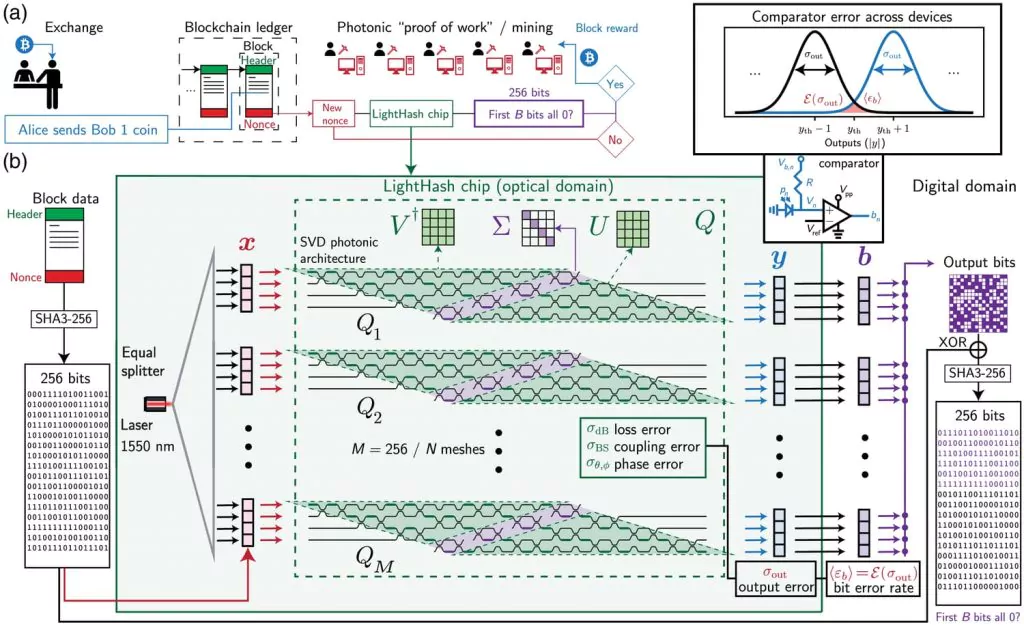Subscribe to our Telegram channel

Scientists have developed a chip for cryptocurrency mining that uses 10 times less electricity
Researchers at Stanford University have developed the LightHash photonic integrated circuit, which generates a photonic chain of blocks for cryptocurrency mining. Scaling up the technology could lead to a 10-fold reduction in power consumption compared to the best modern electronic processors.
LightHash uses silicon photonics to reduce power consumption while maintaining a high level of security. The development is based on the previous version of the HeavyHash chip, which is currently used by some cryptocurrency networks.
Secure BTC mining requires hash function encryption, such as SHA256 or Heavyhash. It is this encryption that accounts for the bulk of energy consumption during cryptocurrency mining.
The researchers modified Heavyhash to work with a jointly developed silicon photonic chip. The analysis showed that such a modification allows for low-energy optical processing, which is the basis for calculating the hash function.
«In essence, we have developed a way to use analog optical circuits to perform multiplication operations with virtually zero power dissipation, but accurate enough to be used in a digital encryption scheme,» said Sunil Pai, one of the authors of the development.
The researchers noted that in order for LightHash to achieve a significant advantage over its digital counterparts, the photonic circuit needs to be scaled up to 64 inputs and outputs. They will continue to work on scaling and optimizing power consumption in the photonic circuit.


